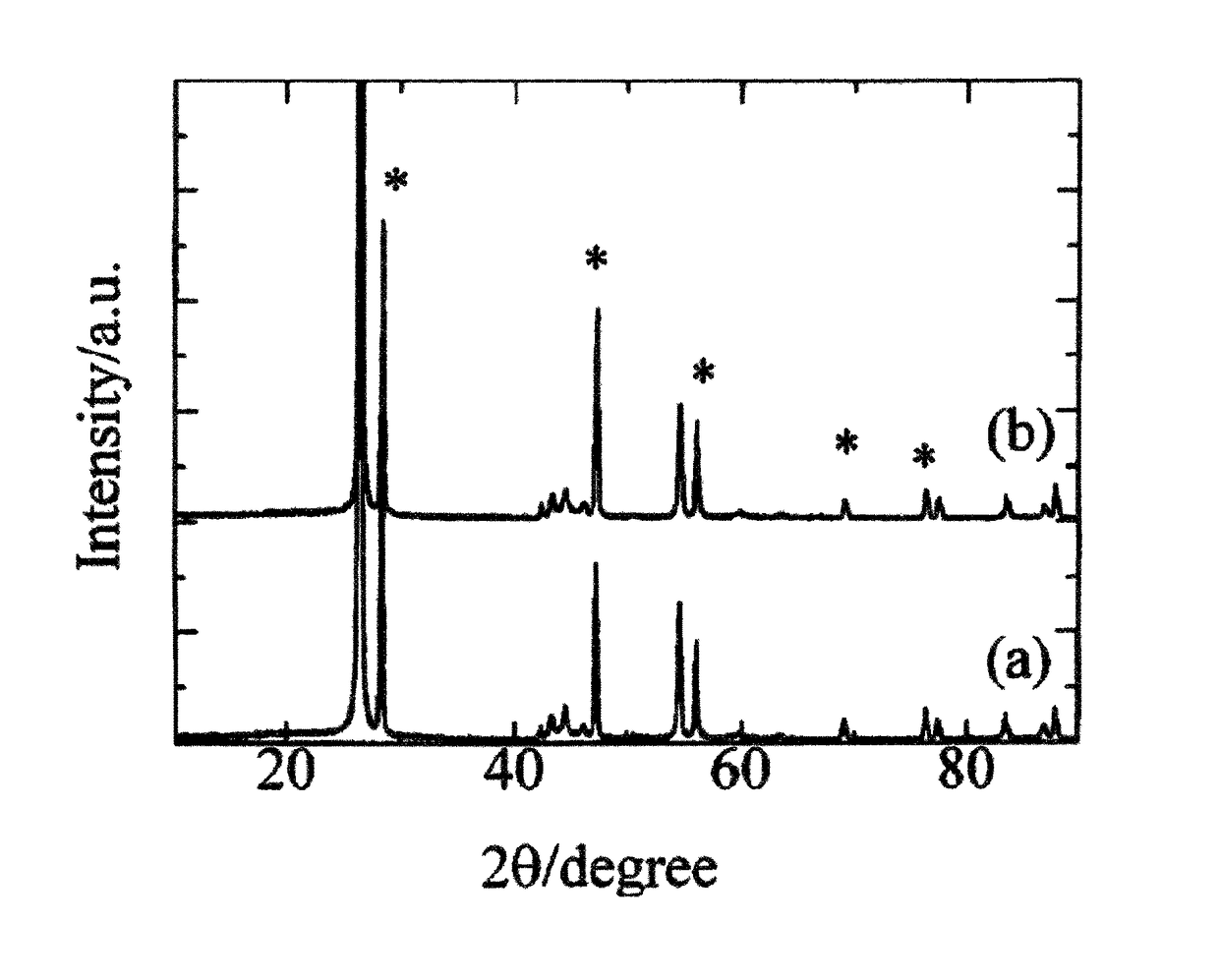Lithium secondary battery of high energy density with improved energy property
a lithium secondary battery, high energy density technology, applied in the direction of batteries, sustainable manufacturing/processing, cell components, etc., can solve the problems of high cost of cobalt as a main component, inability to meet the safety requirements of evs or large-capacity power storage devices, and the structure of lithium secondary batteries including such cathode active materials. to achieve the effect of enhancing adhesion
- Summary
- Abstract
- Description
- Claims
- Application Information
AI Technical Summary
Benefits of technology
Problems solved by technology
Method used
Image
Examples
example 1
[0056]A cathode active material prepared by mixing LiNi1 / 3Co1 / 3Mn1 / 3O2 having an average particle diameter (with respect to capacity) of 0.05 μm / mAh and LiMn2O4 having an average particle diameter (with respect to capacity) of 0.14 μm / mAh in a mixing ratio of 70:30, a conductive material, and a binder were prepared in a weight ratio of 89:6.0:5.0 and then were added to NMP and mixed therein to prepare a cathode mixture. Subsequently, the cathode mixture was coated on an Al foil having a thickness of 20 μm and rolled and dried, thereby completing fabrication of a cathode.
[0057]Similarly, graphite having a specific surface area (with respect to capacity) of 0.009 m2 / mAh, a conductive material, and a binder were prepared in a weight ratio of 96:1.5:2.5, added to a mixer, and mixed therein to prepare an anode mixture. Subsequently, the anode mixture was coated on a Cu foil having a thickness of 10 μm and rolled and dried, thereby completing fabrication of an anode.
[0058]The cathode, the...
example 2
[0060]A battery was manufactured in the same manner as in Example 1, except that the mixing ratio of LiNi1 / 3Co1 / 3Mn1 / 3O2 to LiMn2O4 in the cathode active material was 80:20.
example 3
[0061]A battery was manufactured in the same manner as in Example 1, except that graphite having a specific surface area (with respect to capacity) of 0.008 m2 / mAh and a powder conductivity of 90 S / cm at a powder density of 1.5 g / cc was used instead of the graphite having a specific surface area (with respect to capacity) of 0.009 m2 / mAh.
PUM
| Property | Measurement | Unit |
|---|---|---|
| density | aaaaa | aaaaa |
| conductivity | aaaaa | aaaaa |
| conductivity | aaaaa | aaaaa |
Abstract
Description
Claims
Application Information
 Login to View More
Login to View More - R&D
- Intellectual Property
- Life Sciences
- Materials
- Tech Scout
- Unparalleled Data Quality
- Higher Quality Content
- 60% Fewer Hallucinations
Browse by: Latest US Patents, China's latest patents, Technical Efficacy Thesaurus, Application Domain, Technology Topic, Popular Technical Reports.
© 2025 PatSnap. All rights reserved.Legal|Privacy policy|Modern Slavery Act Transparency Statement|Sitemap|About US| Contact US: help@patsnap.com


